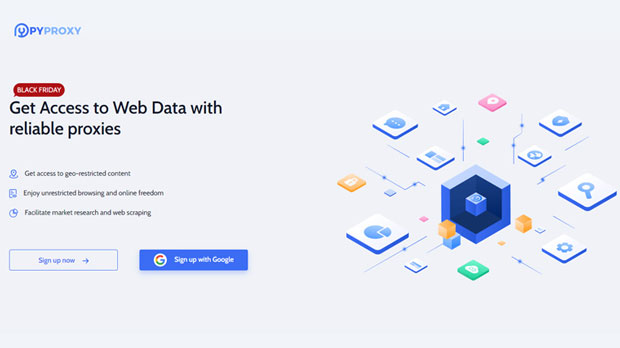Dedicated residential proxies are a type of proxy server that assigns a specific residential IP address to a single user or business. These proxies come from real, physical devices such as smartphones, computers, or other networked devices, which are registered with Internet Service Providers (ISPs). Unlike datacenter proxies, which use IP addresses from large-scale server farms, dedicated residential proxies ensure a higher level of anonymity and reliability. Since these proxies use IP addresses tied to actual residences, they are less likely to be detected or blocked by websites. As a result, they are widely used in various applications, including web scraping, data gathering, online anonymity, and bypassing geo-restrictions. This article will explore the functionality, benefits, and use cases of dedicated residential proxies, providing insight into why they are considered a valuable resource for businesses and individuals alike. How Dedicated Residential Proxies WorkDedicated residential proxies function by routing user internet traffic through a specific residential IP address. These IP addresses are sourced from real residential homes, as opposed to data centers or virtual addresses. Residential IPs are issued by ISPs, which makes them more trusted by websites and online services. When a user requests access to a website or an online service, their request is routed through the residential proxy, which sends the request from a legitimate home IP address. This process ensures that websites see the request as coming from a genuine user, rather than from a bot or a suspicious server farm.The primary difference between dedicated residential proxies and other proxy types lies in the ownership of the IP address. In the case of dedicated residential proxies, the IP address is assigned exclusively to one user or organization, ensuring that no other user shares the same address. This dedicated nature increases the reliability and performance of the proxy, making it suitable for various sensitive tasks like high-volume data scraping or account management in automated systems.Advantages of Dedicated Residential Proxies1. Increased Anonymity and Privacy One of the main benefits of using dedicated residential proxies is enhanced anonymity. Since the proxy uses an IP address tied to a real residence, it is much harder for websites to detect the traffic as coming from a proxy server. This makes dedicated residential proxies a useful tool for activities that require online anonymity, such as bypassing geo-blocked content or accessing restricted websites.2. Reduced Risk of IP Bans Unlike datacenter proxies, which are often blacklisted due to their association with data centers, dedicated residential proxies are less likely to be flagged by websites. Since these proxies come from legitimate residential sources, websites and services are less likely to detect and block them, significantly reducing the risk of IP bans and interruptions.3. Reliable Access to Geo-Restricted Content Dedicated residential proxies are invaluable for bypassing geo-restrictions. They enable users to appear as though they are accessing the internet from a specific location, allowing them to access content that may be blocked or restricted in their own country. This is especially useful for businesses engaged in global marketing, research, or testing, as well as for individuals trying to access region-specific content, such as streaming services.4. High Success Rates for Web Scraping Web scraping often involves sending a high volume of requests to websites to extract data. If too many requests come from the same IP address in a short amount of time, websites may block the IP. Dedicated residential proxies mitigate this risk by providing a wide range of residential IPs that rotate or stay dedicated to a single user. This increases the chances of successful scraping, even when dealing with large amounts of data.Applications of Dedicated Residential Proxies1. Web Scraping and Data Extraction Dedicated residential proxies are widely used in web scraping projects due to their ability to bypass anti-scraping measures and avoid IP bans. Data scientists, marketers, and businesses use these proxies to gather valuable information from websites such as pricing data, competitor analysis, product availability, and customer sentiment. Since dedicated residential proxies provide legitimate residential IPs, they make scraping less detectable and more effective.2. Managing Multiple Accounts Dedicated residential proxies are often employed to manage multiple social media or e-commerce accounts without the risk of account bans. Since each account can be associated with a unique IP address, businesses can automate the management of various accounts for marketing, sales, or customer service purposes. This is particularly beneficial for social media managers or those running online ad campaigns who need to maintain several accounts at once.3. Bypassing Geo-Restrictions and Censorship For users looking to access content or services that are blocked in their region, dedicated residential proxies offer a solution by masking their real IP address and making it appear as though they are located in a different geographic area. This is particularly useful for accessing streaming services like Netflix or Hulu, where content libraries differ by region, or for overcoming censorship in countries with strict internet controls.4. E-commerce and Price Monitoring In the e-commerce industry, businesses use dedicated residential proxies to track competitors’ pricing, product availability, and customer feedback across various online platforms. These proxies allow for continuous monitoring without risking detection or IP bans, making them an essential tool for market research and pricing strategies.Challenges and Considerations in Using Dedicated Residential Proxies1. Cost One of the primary drawbacks of dedicated residential proxies is their cost. Since these proxies provide exclusive access to a residential IP address, they are generally more expensive than other types of proxies. Businesses and individuals must weigh the benefits against the cost to determine if dedicated residential proxies are the right solution for their needs.2. Limited Availability Dedicated residential proxies can sometimes be limited in number, as they are sourced from real residential addresses. As demand for these proxies increases, the availability of high-quality IPs may become more constrained, leading to potential shortages or delays in acquiring the necessary proxies.3. Ethical Concerns While residential proxies are a legitimate tool for many tasks, they can sometimes raise ethical concerns. For example, some users may use these proxies to bypass content restrictions or scrape data from websites without the owners’ consent. It is important for businesses and individuals to consider the ethical implications of using proxies and ensure they are compliant with local laws and regulations.Dedicated residential proxies provide a powerful solution for individuals and businesses looking to maintain anonymity, access geo-restricted content, or gather data without facing the risk of IP bans. Their ability to use real residential IP addresses ensures a high level of reliability and trustworthiness, making them ideal for a range of applications, from web scraping to managing multiple accounts. However, the cost and limited availability of these proxies are factors to consider before deciding to invest in them. As the demand for online privacy and data collection continues to grow, dedicated residential proxies will remain a key tool for anyone seeking to navigate the complexities of the digital world effectively.
May 22, 2025



































































